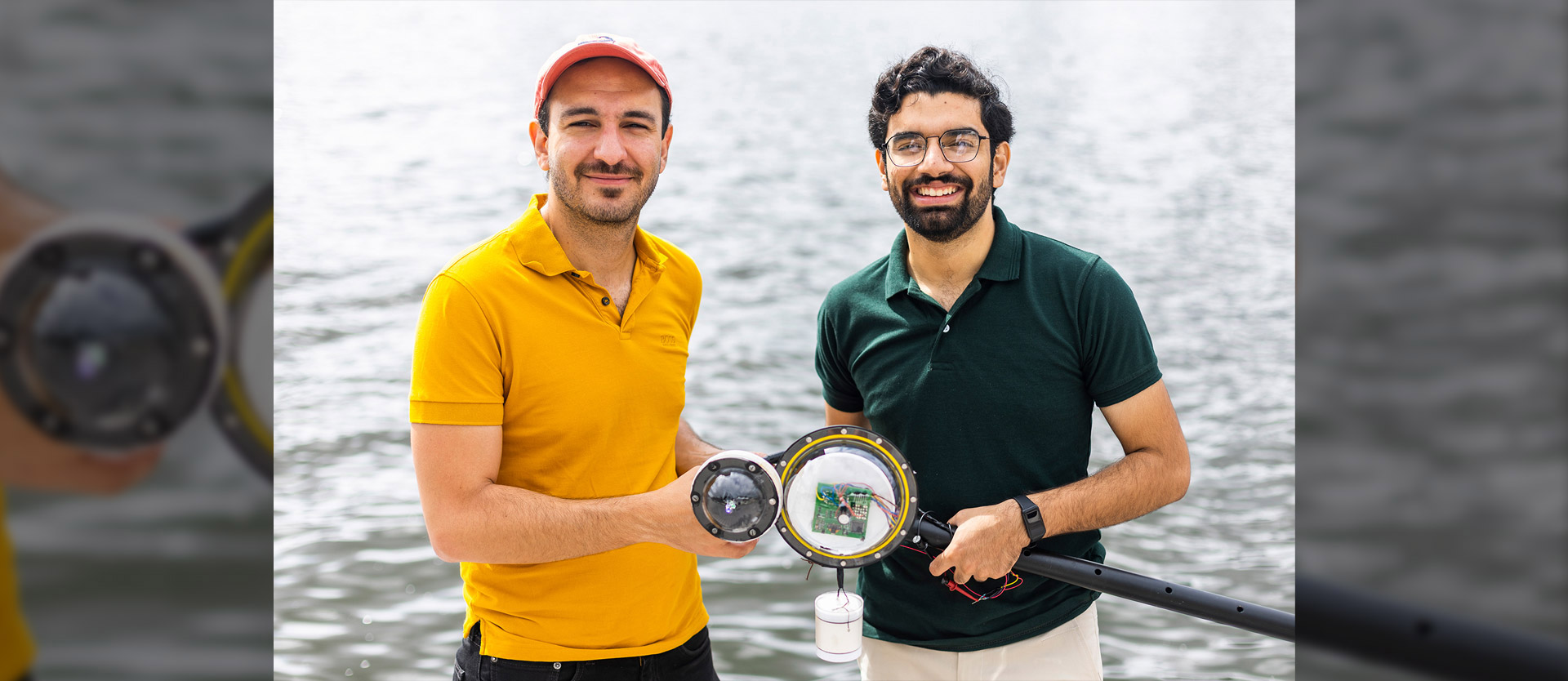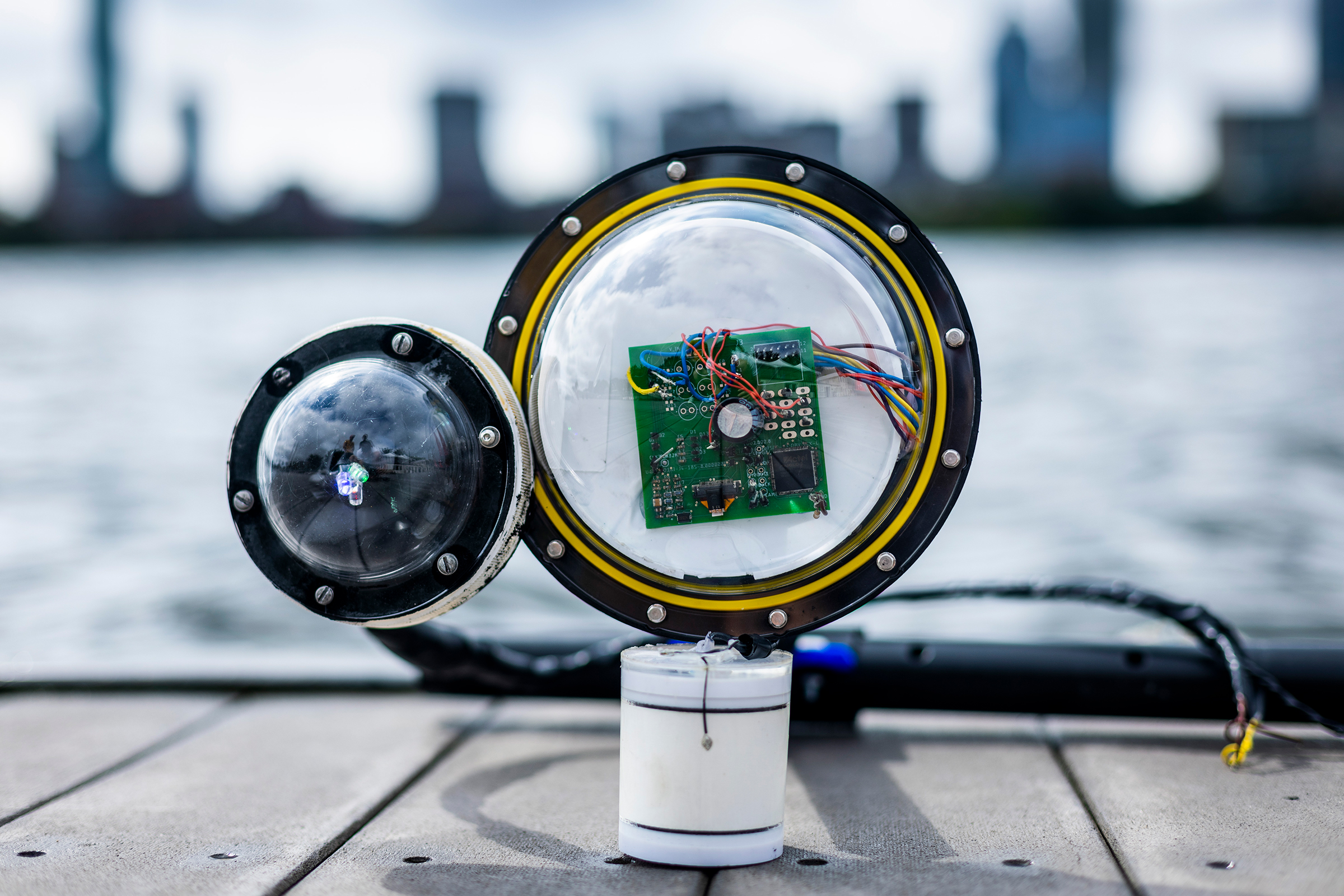
Underwater camera without battery
Engineers at the Massachusetts Institute of Technology in the U.S. have developed a camera that generates its own electricity and can thus deliver photos virtually endlessly.

The autonomous camera is powered by sound. It converts the mechanical energy of sound waves moving through the water into electrical energy. After capturing and encoding the image data, the camera uses sound waves to transmit the data to a receiver. Because it does not require a power source, the camera can run for weeks. It could be used by scientists to search for new species in remote parts of the ocean, capture images of marine pollution, or monitor the health and growth of fish on aquaculture farms.
"One of the most exciting applications for me is climate monitoring," says Fadel Adib, professor of electrical engineering and computer science at the MIT Media Lab. "We're building climate models. But we lack data from over 95 percent of the ocean. The new technology could help us build more accurate climate models and better understand how climate change is affecting the underwater world."

The new battery-free wireless underwater camera could be used in climate modeling, among other applcations.
Energy from sound
To build a camera that could operate autonomously for long periods of time, the researchers needed a device that could collect energy on its own underwater while consuming little power. The engineers solved the problem using transducers made of piezoelectric materials that they attached to the outside of the camera. Piezoelectric materials generate an electrical signal when a mechanical force is applied to them. When a sound wave traveling through the water hits the transducers, they vibrate and convert the mechanical energy into electrical energy.
The sound waves can come from any source, such as a passing ship or marine life. The camera stores the energy until it is sufficient to power the electronics that take photos and transmit data.
To keep power consumption as low as possible, the researchers used commercially available low-power image sensors. However, these sensors only capture grayscale images. Since there is no light source in most underwater environments, they also had to develop a low-power flash.
The researchers solved both problems simultaneously using red, green and blue LEDs. When the camera takes a picture, it lights up with a red LED and then uses image sensors to take the photo. The same process is repeated with green and blue LEDs.
"Even though the image looks black and white, the red, green and blue light is reflected in the white part of each photo," Akbar explains. When the image data is combined in post-processing, the color image is reconstructed.
Data transmission with sound
The image data is encoded as bits and sent bit by bit to a receiver using a process known as underwater backscattering. The receiver sends sound waves through the water to the camera, which acts as a mirror and reflects these waves. The camera either reflects a wave back to the receiver or turns its mirror into an absorber so that the wave is not reflected back.
A hydrophone next to the transmitter detects if a signal is reflected back from the camera. If it receives a signal, that's a bit-1, and if there's no signal, that's a bit-0. The system uses this binary information to reconstruct and post-process the image.
The researchers tested the camera in various underwater environments. In one case, they captured color images of plastic bottles. They also photographed an African starfish. The device was also able to repeatedly image underwater plants for a week in a dark environment to observe their growth.
Original publication:
Sayed Saad Afzal, Waleed Akbar, Osvy Rodriguez, Mario Doumet,
Unsoo Ha, Reza Ghaffarivardavagh & Fadel Adib
Battery-free wireless imaging of underwater environments
doi.org/10.1038/s41467-022-33223-x
Nature Communications, 26. September 2022












